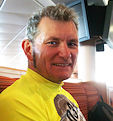There are entire sections of the cycling industry that rely on our desire to upgrade - shinier, lighter parts, more (or less) colourful clothes and accessories, gadgets, trinkets, and the latest fashionable add ons. All of them make a browse on the internet a dangerous affair for the likes of me.
We all like to think that by buying this bike, that saddle or those shoes we will become better, stronger, fitter, ignoring the massive elephant in the room - or in my case, the one sitting on the bike. Lighter components, made from exotic materials are all well and good, and do make a considerable difference, but when it comes down to going faster or further, it becomes easier when you have less ballast to shift.
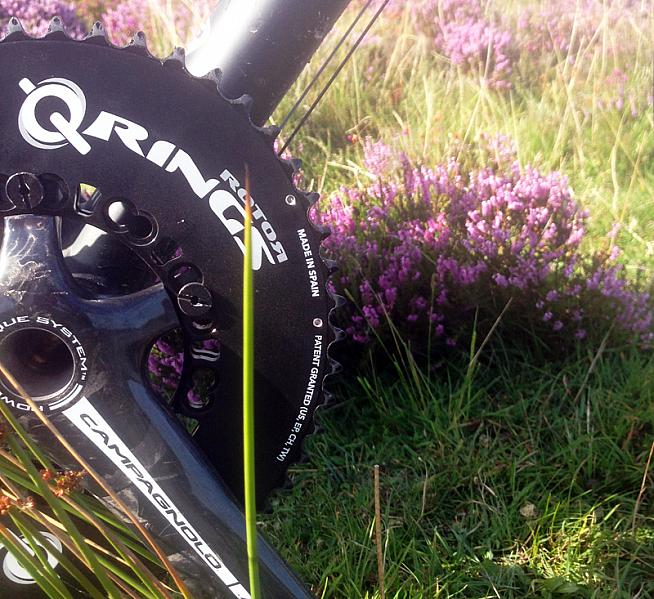
I produce an impressive amount of power through my cranks. Just how much I've yet to measure accurately, but the fact I can turn my chainset with immense torque means very little when it's in a granny gear up a 10% slope. That's why they have crawler lanes on some roads - so that the juggernauts can labour their loads up the hills while vehicles with a tenth of the power zoom past.
However, my heroic denial in the face of irrefutable evidence that I may be a bit of a porker means that I continue to ignore 'eating less' in favour of 'spending more'. Ok, it's not as simplistic as that. There are some upgrades that can have a noticable benefit, regardless of the weight of the cargo, and I have always found lighter wheels, for example, improve my riding experience.
Rotational physics fascinates me, and maybe this is why I have had a long obsession with ovalised chain rings. Seeing them in action on bikes of the pro peloton, ridden by Brad Wiggins and Chris Froome, hypnotised and intrigued me. I understand, albeit in a simplistic way, the science behind them.
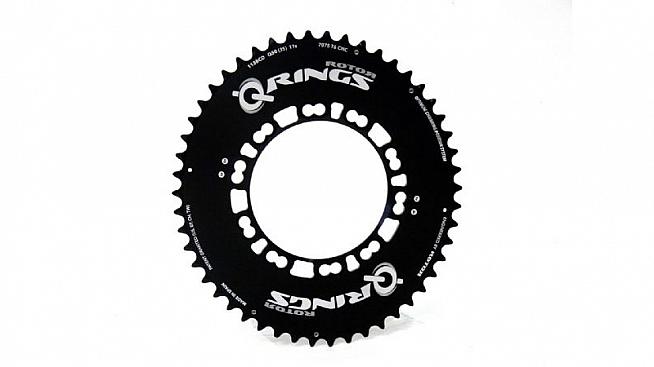
Generally speaking, untrained human legs do not produce constant pedalling power - there are dead spots in your rotational arc that cause you to push at different rates. Clipless pedals help to smooth that out by giving you the facility to pull as well as push, but there are still hard and easy parts of the stroke. Ovalised rings try to eliminate that by effectively reducing the diameter of the cog where the pedalling is hardest, in theory meaning that you can use the same constant power throughout your effort. For an explanation of the principles at work, check out the Rotor site.
I'm told that you can train yourself to cycle more efficiently, but it takes time, concentration and effort, which as a hobby cyclist it's difficult to commit to, unlike those with professional coaching.
Buoyed up with the allure of TdF champion-endorsed equipment, I decided to see what the fuss was all about. Spanish company Rotor have been making ovalised chainrings for many years, and they offer a 30-day 'free' trial of their Q-Rings to see if they're right for you. In actual fact, you buy them and have them fitted at a bricks-and-mortar dealer, and you're given a no-quibble refund if you don't like them.
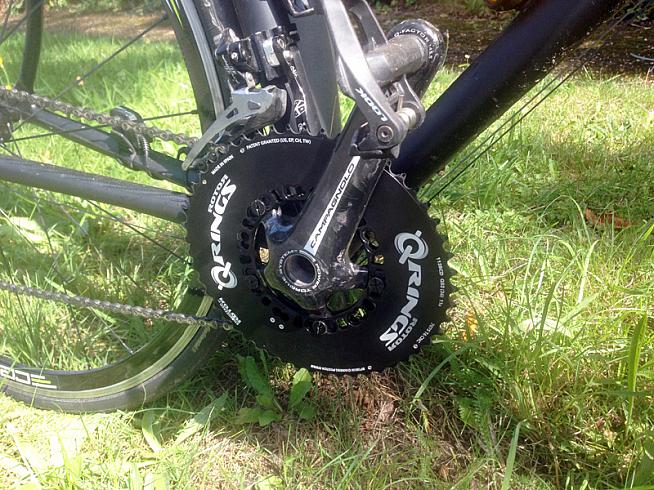
I took my bike over to In-Gear Cycles in Forest Row to see if they could help me out, which they were delighted to do right up to the point where I told them I ran a Campagnolo groupset. Choice of rings is limited for Campag, but they got me some semi-compact ones to try, upping my 50-34 set-up to a slightly less cowardly 52-35. Ever since getting my first compact chainset, I worried I'd made the wrong move away from my wonderfully spinny triple, but I have since learnt to push harder up my local slopes. Semi-compact didn't seem such a big step for me.
The first test: Cob Lane
A couple of days later I was ready to try out the Q-Rings for the first time. I picked a tough baptism for their maiden voyage. Cob Lane is 400 metres of tree-lined misery, winding up from a pot-holed descent from West Hoathly and emerging 100 metres south of the South of England Showground in Ardingly. It has forced me into the Walk of Shame twice, but not for a few years, and the thought of pedalling squares up its 17% average fills me with anxious doubt every time I decide to go there.
As usual, the slope to the bottom of this climb was strewn with debris and peppered with more holes than an Arizona desert road sign, so gear selection, the reason for my first failed attempt, needs to be done well in advance. As I hit the trundle section I was actually surprised at how sedate my pedalling was. I'm not saying it was easier (it wasn't) or faster (it wasn't), but somehow, that climb seemed smoother.
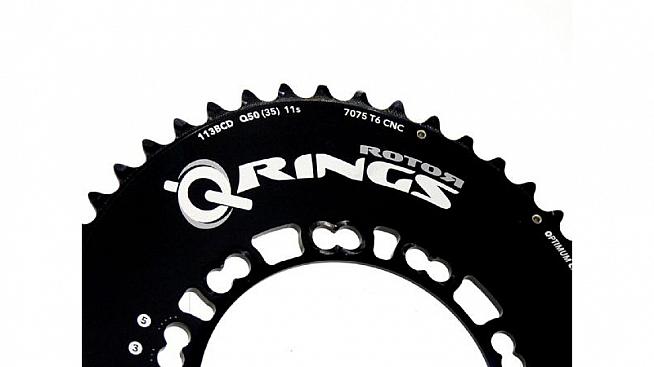
Yorkshire trials
The real test of this newfound smoothness was to come later that week, when I was due to ride the Yorkshire 199 Sportive - a three-day, 330km trek across the North York Moors and Howardian Hills. Apprehensive of the area's reputation, I was more than a little grateful for even the misplaced notion that I somehow had artificial assistance to get me over the Moors in one piece.
The first day had no real challenge, climbing-wise; aside from a couple of gradients similar in percentage and length to Cob Lane, it was all much more rolling terrain. This was where I began to feel more comfortable in using the Q-Rings. Long stretches at a constant cadence kept me feeling I was working more efficiently than of late, even if I was more than once distracted by looking down at my chain, which appeared to be undulating in and out in relation to the bottom bracket (because it is...).
Days two and three were, by contrast, a veritable vertical banquet of steep climbs and descents ranging from the high teens to mid-twenties in percentage - in fact, on day three the first 50km out of 120km appeared to be directly up. Not having done this area before on 'normal' rings, I can't really say if it was easier with the Q-Rings - all I can say is I did it, and I was surpised at how well I felt able to tackle the slopes.
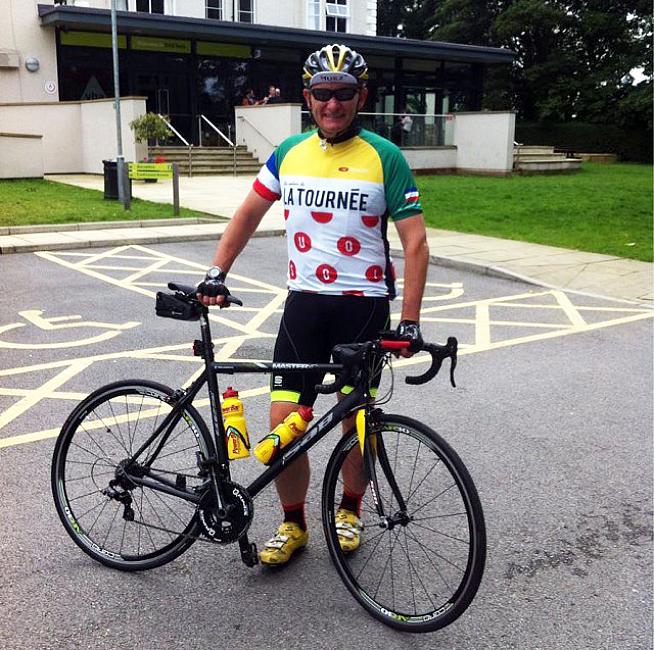
French inquisition
As a kind of final confirmation, I took on the Wiggle French Resistance sportive last weekend, a route I'd done a couple of times before, to see if the ovalised rings made any overall difference in as close to an actual proper scientific test I could manage. The speed at which you ride the Nord-Pas-de-Calais really depends on the direction and strength of the prevailing wind. It's not uncommon for the first 10km of the ride to be done by less-than-adequate cyclists like me at an average of 35kph, but the final 10km will suffer as a result, retracing the same road in the opposite direction.
Such was the case last week, but further inland - where the hills start to take their toll - the wind isn't as much of a hindrance. I was amazed, both on the ride and afterwards looking at my Strava, that the Q-Rings effort appeared to be a mass of yellow-blobbed personal bests. This, of course, could be down to how I was feeling on the days in question, but I was still suffering the effects of the previous day's 10km run on the most recent outing. My mate Nick, who cycled with me, also commented on how much less time he was spending waiting for me at the top of the climbs.
Down to earth with a bump, there...

Conclusion
I'd like to say that ovalised rings are the proverbial mutt's, but it's hard to state that emphatically without more rides over more terrains. They do, however, work very well for me, and with Rotor's 30-day trial offer, there's a no-risk opportunity for everyone to find out for themselves. I also think Rotor's Q-Rings in particular look stunning (and I'm not normally a fan of the solid look - to me less is more). I seriously recommend giving them a try.
Rotor Q-Rings start at £49 for an inner chainring and £90 for an outer; from www.velotechservices.co.uk
0 Comments

